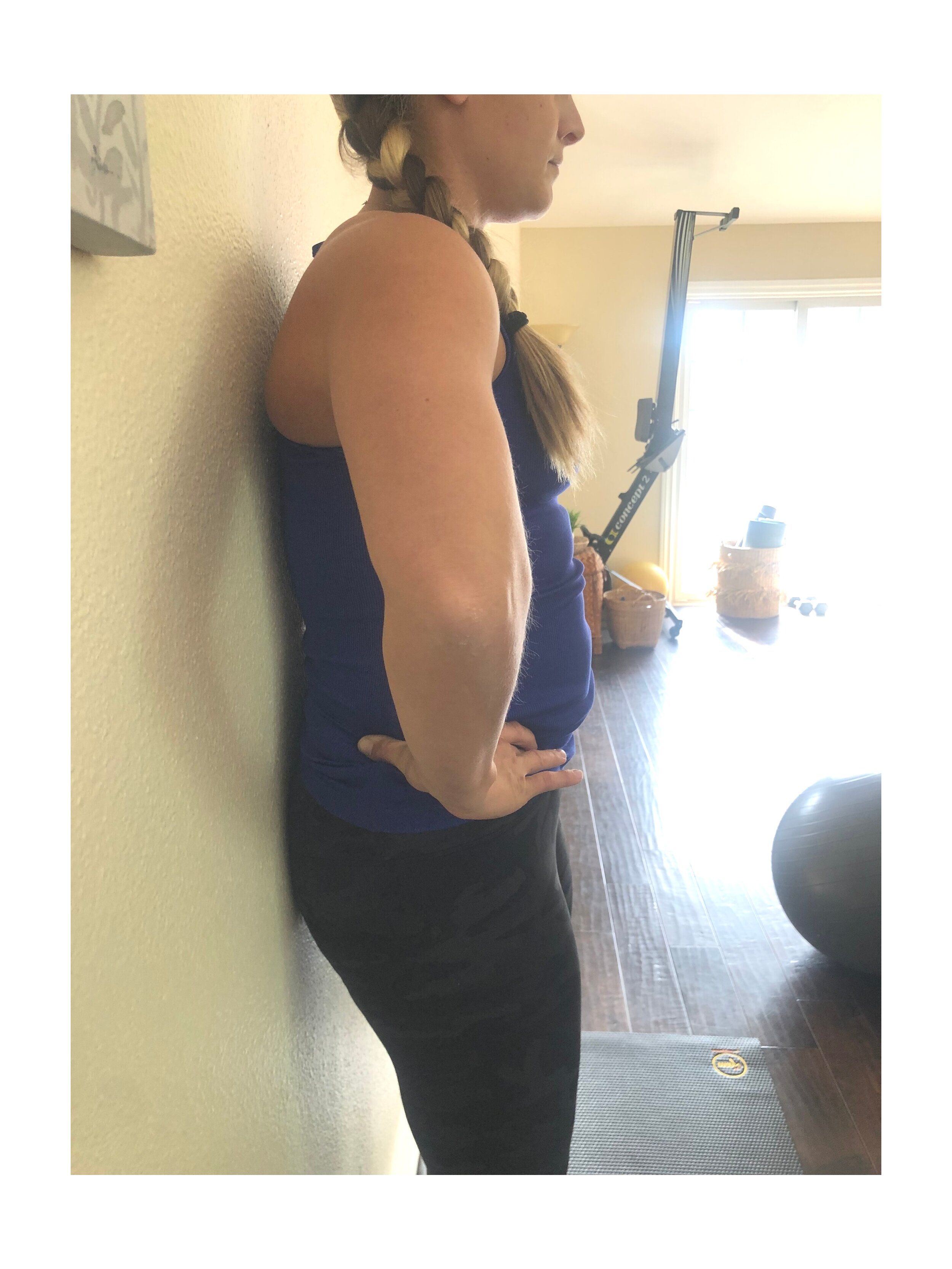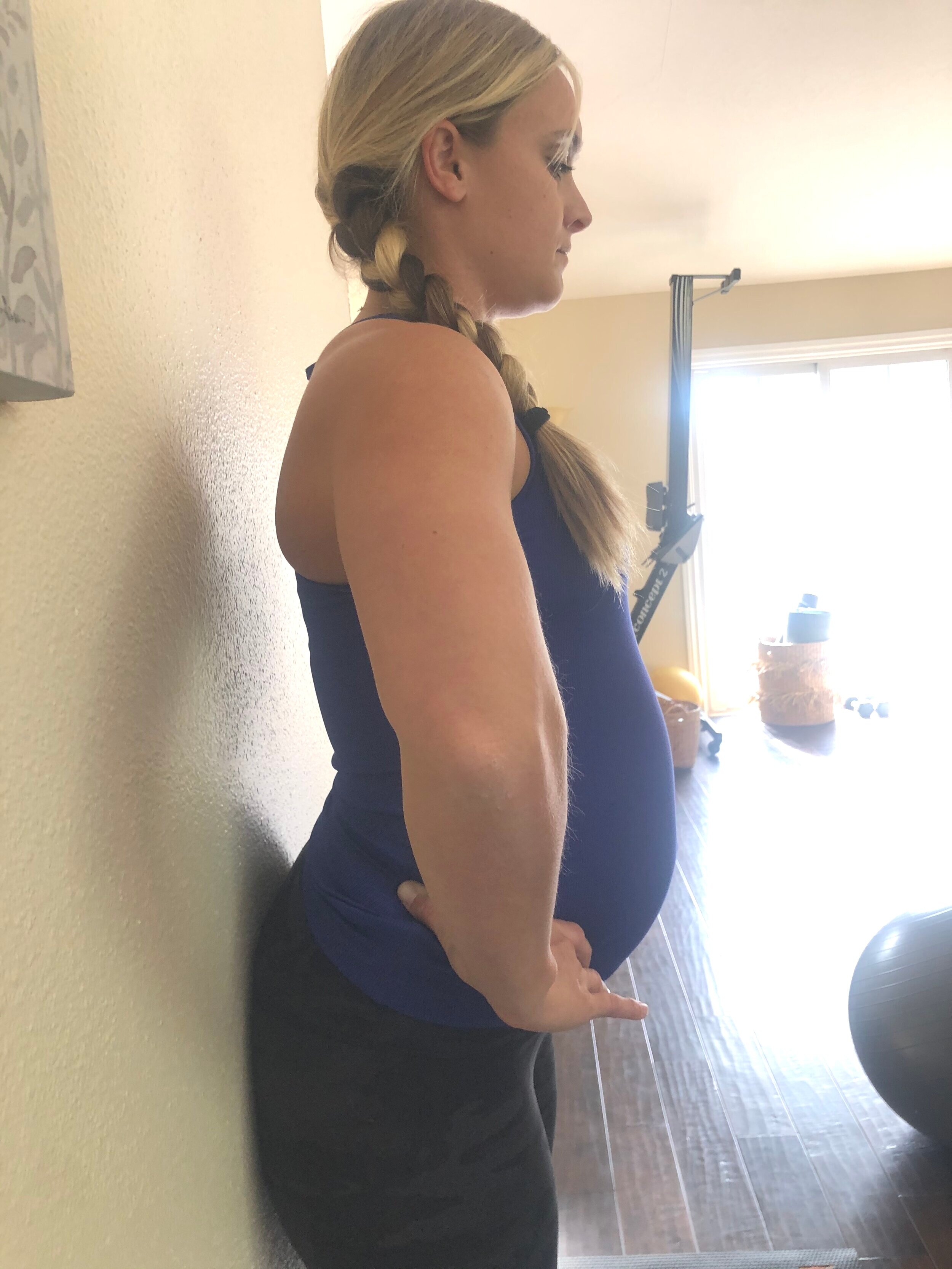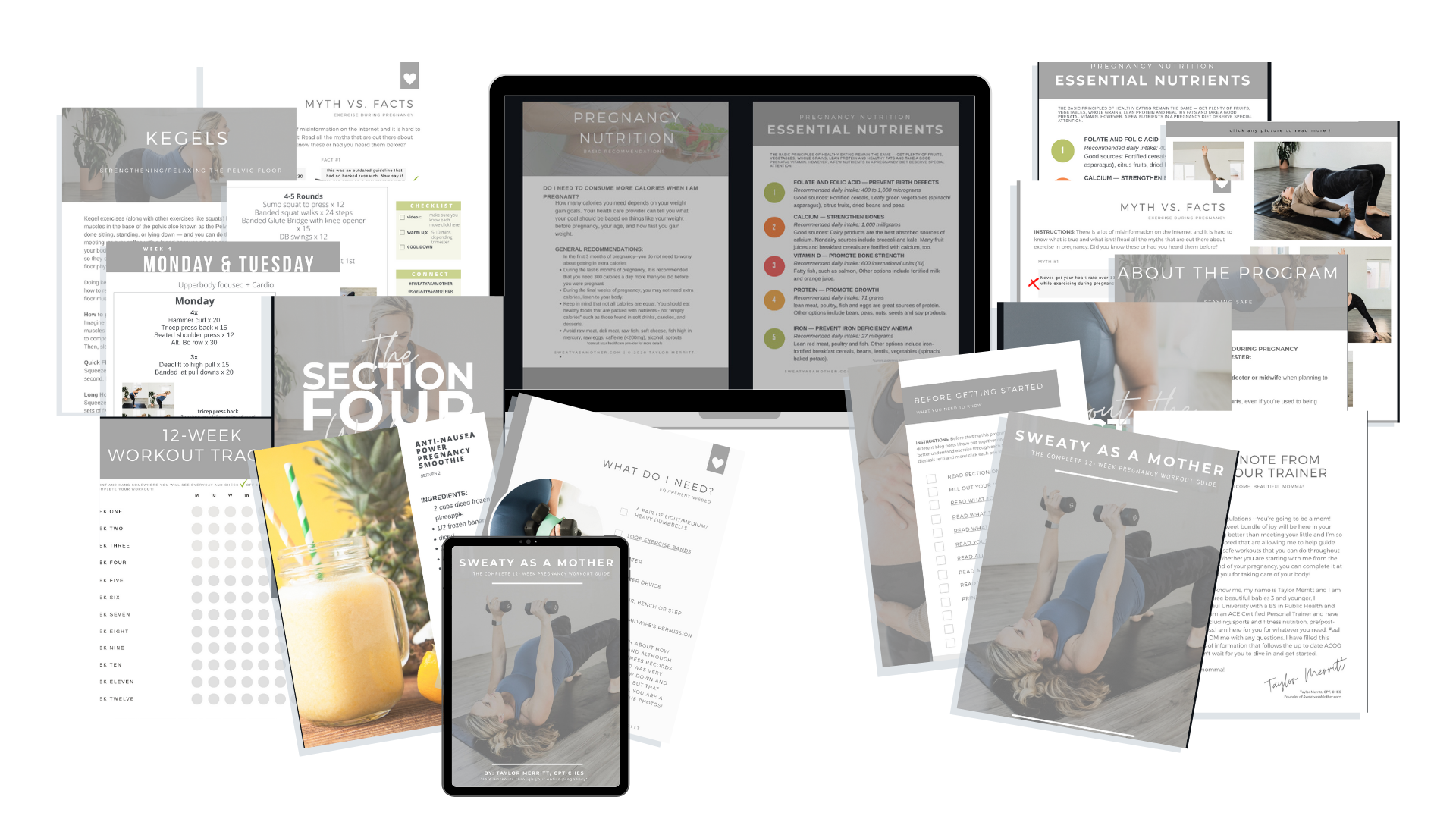Exercise in the Second Trimester: What to Expect and Beyond
You’ve reached the second trimester (week 13-27) ! For many, morning sickness begins to disappear and energy levels finally come back. For me, this was the “honeymoon phase” out of all the trimesters and I enjoyed it the most. Once the second trimester hits, the chance of miscarriage goes down and for that reason, many women begin to announce that they are expecting! This is such a relief, because then we do not feel as if we need to hide our changing bodies and tend to get back into our routine.
If you haven’t already found your workout routine yet, the second trimester is a great chance to get into the best exercise regimen. If you can get into the habit of exercising now, there is a good chance that you will keep your healthy behaviors permanently!
There are a lot of major structural changes in the body that start to occur in second trimester and your risk of injury increases. For this reason, it is even more important to know exactly what to do and not do here. Let me know if you have any questions
Reasons to Workout During 2nd Trimester:
The second trimester is the ideal time for you to strengthen your body, learn proper exercise techniques, and improve posture before the third trimester when it begins to get harder.
To strengthen the core safely (to avoid DR) and pelvic floor to help to prevent some of the strain from the second trimester, and it prepares your body for labor and delivery.
to help set you up for success in the more physically challenging third trimester and then fourth trimester, by building healthy habits and making sure they stick around!
Common Ailments in Second Trimester
Round ligament
S.I. Joint Pain
As mentioned in the first trimester exercise blog post, Relaxin is released in the body during pregnancy and an even bigger surge happens around week 16! The relaxin softens the ligaments around the S.I (sacroillac). Joint, and in combination with the increase in downward pressure from the growing baby and weight gain, the bones actually separate. while this is necessary for delivery (it widens the hips and birth canal), it also leads to great instability, and often pain, in the pelvic region. With proper posture and attention to form when working out, you can help avoid misaligning the pelvic bones..
Round Ligament Pain
All ligaments expand during pregnancy, but none is quite as pronounced as the round ligament. The round ligament attaches the uterus to the pelvic bone. While the uterus is increasing in size, the round ligament is also stretching from its pre-pregnancy length of about 2 inches to as long as 12 inches by the end of the pregnancy..insane right?!
it is not surprising that most women feel pain or cramping in their pelvis region. Its very normal, that most will experience this pain from weeks 14-16 during a growth spurt of the baby, and again later in the third trimester. If you feel pain deep within the belly, not on the surface of the skin, that is most likely round ligament pain.
It can help if you practice the correct way to get up from a sitting or lying position . ( check this video out for a visual)
3. Decrease in Joint Function
Synovial Fluid is the fluid that lubricates your joints and assists with your body’s range of motion. it is basically a “natural cushion” between the joints. it is produced and activated by movement in the joints, but during pregnancy there is a decrease in synovial fluid production. Therefore our joints are more tight together, and can lead to discomfort and limited movement. With less movement in the joints, the synovial fluid takes longer to warm up and lubricate the joints.
Increasing your warm-ups are so important from now going forward! (more about that below)
4. Heartburn
Progesterone relaxes the cardiac sphincter, which prevents stomach acid from coming back up into the esophagus, causing heartburn. Some women experience this and some don’t. If you do suffer from it, the best treatments for heartburn includes eating several smaller meals throughout the day, avoiding caffeine and spicy foods, and using over-the-counter antacids (always consult your doctor first).
If you have heartburn, you may have trouble performing exercises on your back. You can simply Modify exercises in a seated or standing position as lying down can make it worse.
5. Pregnancy Posture:
Posture is strongly controlled by habit and your own kinesthetic awareness, both in and out of pregnancy.
In the second trimester of pregnancy, as you gain weight, your uterus grows, and in combination with the increase in relaxin—your “normal” good posture may struggle.
As the uterus grows, it shifts our center of gravity causing the pelvis to tip forward. This causes the low back to sway. This is calle lordosis— the increase in the natural curve of the lower spine— and this puts strain on the muscles of the low back to try to maintain an upright position.
You may notice your hamstring muscles tightening to try to protect your back so stretching them can help.
As you know, the abdominal muscles lengthen and weaken under pressure, and without their functionality, the pelvis and the back become further destabilized. kyphosis
Tips to Improve Pregnancy Posture with Exercise
Establish “good” body alignment
Strengthen and stretch muscle groups to achieve balance
keeping focus on back strengthening, core breathing, stretching hamstrings, strengthen glutes)
Increase core stability
What is good “Pregnancy Posture”
in relaxin—
Tips to Improve Pregnancy Posture with Exercise
Establish “good” body alignment
Strengthen and stretch muscle groups to achieve balance
keeping focus on back strengthening, core breathing, stretching hamstrings, strengthen glutes)
Increase core stability
What is good “Pregnancy Posture”
an example of poor pregnancy posture—not tucking tailbone or holding baby up and in! im arching my lower back (lordosis)
let’s start with incorrect pregnancy posture: sticking your belly out, turn your toes out, open and lift your ribs.
Correct alignment and posture:
simple cues to remind yourself
are “hold your baby high and tight,”
tucking your pelvis “ugly butt”
“pull your front ribs up and in,”
“hug your baby towards your heart”.
With better posture, you will likely feel less fatigued and are more likely to avoid back pain. Try doing rows, abdominal work, and lat pull downs to encourage correct posture, as well as strengthening the muscles needed to stay aligned as the baby grows.
A Simple way you can test your posture to make sure it is “correct” is to do this on a wall.
On the left—I am in “good posture”. flat against the wall. hips tucked. holding baby high and tight.
on the right—I am in BAD posture. look at the exaggerated curvature in my lower spine, butt sticking out, belly out, back not flat to the wall.
Focus on Lengthening Warm-ups
In my training they use the analogy of silly putty when thinking about our pregnancy joints. Just as Silly Putty straight out of it ‘egg’ can be easily torn in half, that is why our cold muscles and joints are more prone to injury. but think about when the Silly Putty has been warmed up between your hands, it then stretches without tearing!
Most research suggests 8-12 minutes to warm up for cardio and strength -based workouts. which will give the joints the time they need to lubricate.
Common concerns in Second Trimester
Placenta Function
Some women have mentioned that they are concerned about the effect of exercise on their unborn baby. A main concern is if the baby will receive enough oxygen when blood is redirected from the placenta to the mother’s other working muscles. The answer is that it is actually great for your baby and that the placenta becomes stronger when placed under “stress”. Research shows that placentas in exercising women are larger than those in non-exercisers (Clapp, 2003). This larger organ is therefore better at supplying oxygen and nutrients to the baby! Pretty extraordinary.
Exercise does take blood and nutrients away from the baby for the time of exercise, but the baby gets more blood and nutrients during times of rest. This results in a n overall increase in blood and nutrients to the babies of those who exercise.
2. Supine Hypotensive Syndrome
The second trimester marks a time when you may no longer be able to comfortably lie flat on your back for long periods of time. You may feel numbness or tingling in your legs, dizziness or lightheadedness. it may sound scary, but it is not harmful to the baby and is easy to fix!
it is cause because the baby may have enough weight to compress the vena cava (the vein returning blood to the heart) when you are lying on your back (Kinsella, 1994).
You can simply change positions if you have any discomfort! All exercises that are normally done flat on the back can simply be done at a slightly elevated position with a stability ball or large foam wedge, or exercises can be performed in a side-lying position.
How to identify supine hypotensive syndrome
you are feeling dizzy, feeling like you are underwater, seeing spots, or feeling lightheaded.
If you experience these symptoms, simply turn to your side until you feel better.
supine hypotensive syndrome does not hurt the baby.
Bottom line on Supine Hypotensive Syndrome
You may perform exercises on your back, but only for short periods of time (90 seconds to 2 minutes) before coming back to sitting position.
The main goals of second trimester exercise should be:
Proper warm-up
Due to the increased laxity and downward pressure on the joints and a decrease in synovial fluid, a proper warm-up is imperative. (8-12 minutes)
Continue core training; focus on kinesthetic awareness
The second trimester brings two big shifts in the way women can safely exercise. At this stage, you should avoid exercises that put you completely on your back for more than a short set of exercises as well as any exercises on your stomach! This doesn’t mean to stop doing exercises that are traditionally on your back, but simply modifying but using a wedge or stability ball!
Work on balance and posture training
Balance training should be included in all of your workouts. Because of all the changes in body shape, center of gravity, and joint stability, balance is compromised during pregnancy. For example, a squat can be done with a step up to standing on one foot while performing an upper body exercise. If you begin to lose your balance, simply put your foot back down to regain control. Do not do anything that feels unsafe or could cause you to fall!
Key Moves of the Second Trimester
Pelvic Floor exercises/Kegels
Upper back work
Balance training exercises












Keeping a strong core during pregnancy is so important and will help in labor, delivery and recovery. Although this is true, there are many things to remember while doing core that need to be taken seriously so you do not create issues like “diastasis recti” which can create issues for you postpartum and beyond.